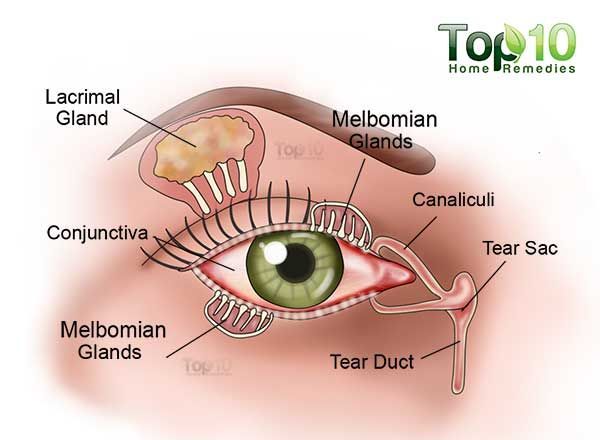Eye Oil Gland Blockage: Meibomian Gland Dysfunction (MGD) – Symptoms, Causes, and Treatment
What are the symptoms of meibomian gland dysfunction (MGD)? What causes MGD? How is MGD diagnosed and treated?
Understanding Meibomian Gland Dysfunction (MGD)
Meibomian Gland Dysfunction (MGD) is a common eye condition that affects the tiny oil glands located in the eyelids. These glands, known as meibomian glands, produce an oil called meibum, which is a crucial component of the tear film that keeps the eyes moist and lubricated. When there are problems with the amount or quality of this oil, it can lead to various eye-related issues.
Symptoms of Meibomian Gland Dysfunction
In the early stages of MGD, you may not experience any symptoms. However, as the condition progresses and the tear film becomes affected, various symptoms can arise. These include:
- Burning, itching, or irritated eyes
- Feeling like there is a grain of sand or dust in the eye
- Red, inflamed eyelids
- Uneven or rough inner rims of the eyelids (a classic sign of MGD)
- Moments of blurred vision that improve with blinking
- Worsening of symptoms when using digital screens for extended periods or in dry environments
Causes of Meibomian Gland Dysfunction
MGD can be caused by a combination of factors, including:
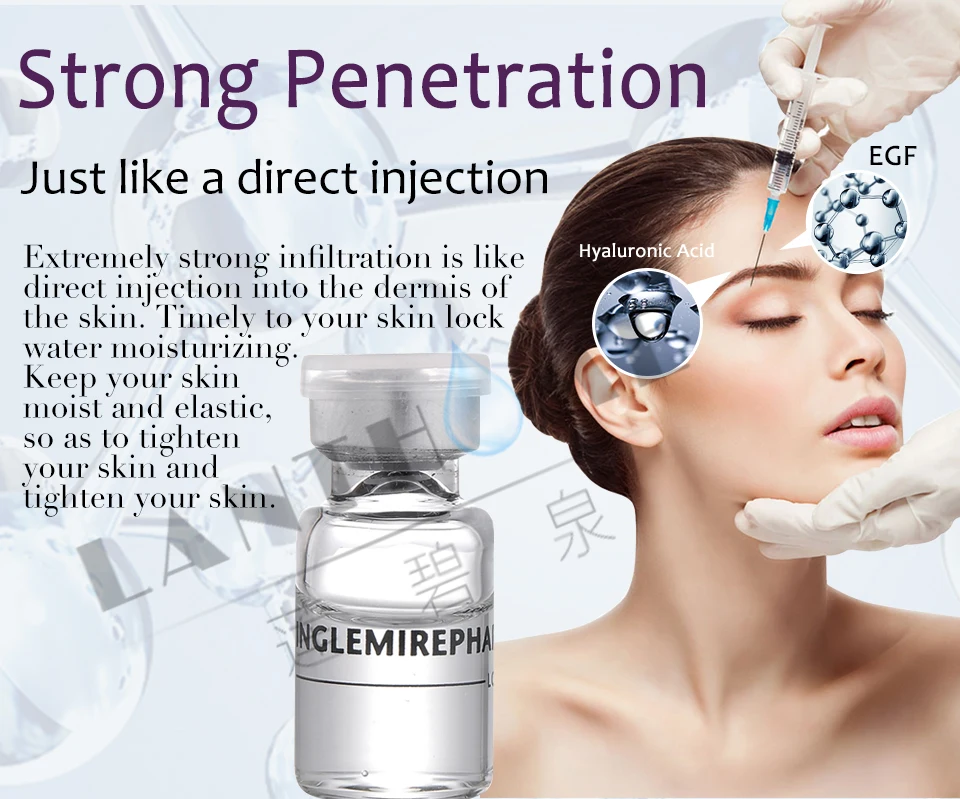
- Age – The number of meibomian glands decreases over time.
- Ethnicity – Asian people are about three times more likely to develop MGD than those with European ancestry.
- Contact lens wear – Wearing contact lenses increases the risk of developing MGD.
- Underlying medical conditions – High cholesterol, allergic conjunctivitis, eyelid/cornea inflammation, bacterial infections, and autoimmune diseases like rosacea, lupus, rheumatoid arthritis, and Sjögren’s syndrome have all been linked to MGD.
- Certain medications – Estrogen replacement therapy, drugs that reduce androgen, and retinoids (used for acne or anti-aging) can also contribute to MGD.
Diagnosing Meibomian Gland Dysfunction
There is no single test that can definitively diagnose MGD. Your eye doctor will examine your eyelids closely to inspect the gland openings and may perform tests such as:
- Schirmer’s test to check for adequate tear production
- Measurements to assess the quality of your meibum and the rate of tear evaporation
The combination of these findings will lead to a diagnosis of MGD.

Treatment for Meibomian Gland Dysfunction
The treatment for MGD depends on the stage of the condition and any underlying health issues. Initial self-care measures may include:
- Applying warm compresses to the eyelids to help loosen the oil
- Gently massaging the eyelids to help unblock the gland openings
- Using a non-soap cleanser to clean the eyelid margins
- Using a humidifier to counter the drying effects of air conditioning or heating
- Considering daily disposable contact lenses with a “water gradient” design for improved comfort
- Avoiding products with retinoids near the eyes
- Taking omega-3 fatty acid supplements to help improve meibum quality
For more advanced cases or if underlying health conditions are present, your doctor may prescribe additional treatments, such as:
- Lubricating eye drops or sprays
- Antibiotic eye drops or ointments to treat infections
- Cyclosporine eye drops to suppress the immune system
- Steroid eye drops or creams to reduce inflammation
- In-office procedures to open blocked meibomian glands and improve oil flow
Complications of Meibomian Gland Dysfunction
If left untreated, MGD can lead to several complications, including:
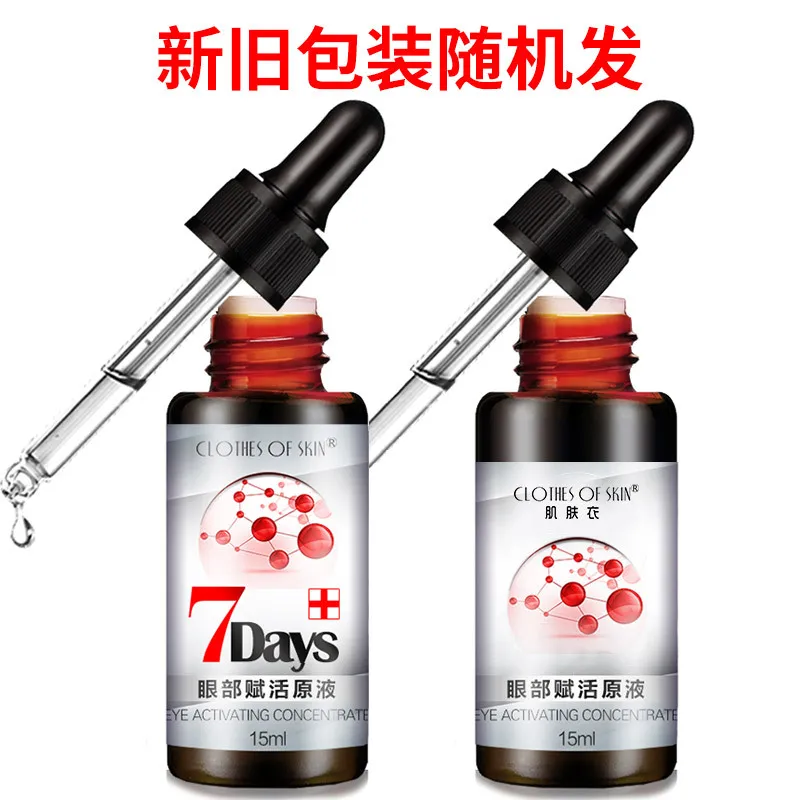
- Increased risk of eye infections and inflammation after eye surgery
- Development of dry eye syndrome (also known as dry eye disease)
- Eyelid inflammation, known as blepharitis
- In advanced cases, corneal disease
It’s important to work closely with your eye care provider to manage MGD and prevent these potential complications.
Preventing and Maintaining Meibomian Gland Health
While some factors that contribute to MGD, such as age and ethnicity, cannot be controlled, there are steps you can take to help prevent and maintain the health of your meibomian glands:
- Adopt a daily eyelid hygiene routine, including warm compresses and gentle massage
- Use a humidifier to combat the drying effects of air conditioning and heating
- Avoid products with retinoids near the eyes
- Consider taking omega-3 fatty acid supplements
- Manage any underlying medical conditions that may contribute to MGD
- Discuss the use of contact lenses with your eye care provider
By understanding the symptoms, causes, and treatment options for Meibomian Gland Dysfunction, you can take proactive steps to maintain the health of your eyes and prevent or manage this common eye condition.
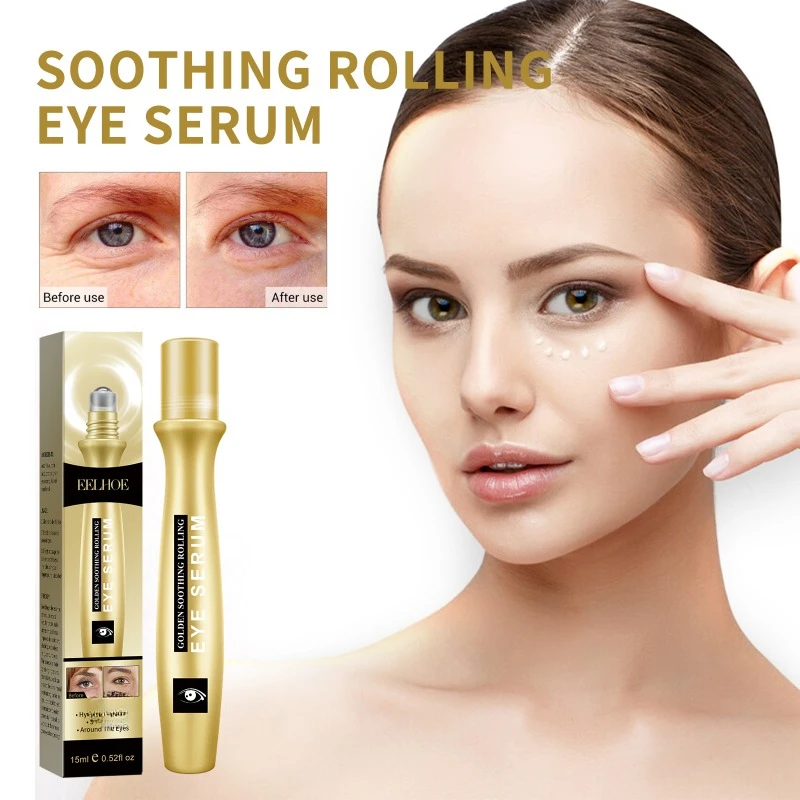
Meibomian Gland Dysfunction (MGD): Symptoms, Causes, & Treatment
Written by Julie Canter
- What Happens
- Causes
- Symptoms
- Complications
- Diagnosis
- At Home
- Medical Treatment
- More
Meibomian gland dysfunction (MGD) is a common eye condition, yet many people don’t realize they have it. You get it when there’s a problem with a few dozen tiny glands in your eyelids that help make the oil layer of your tears.
These meibomian glands, named after the German doctor who studied them, make an oil called meibum. Meibum, water, and mucus form the three layers of tear film, the fluid that keeps your eyes moist. The oil helps prevent the water layer on the eye surface from evaporating or drying out too quickly.
Changes to the amount or quality of the oil, or to the glands themselves, can lead to MGD. It’s often the result of a combination of things. The most common type, obstructive MGD, happens when the gland openings get clogged, and less and less oil reaches the eye surface.
Your doctor will tailor treatment based on the stage of your MGD as well as any underlying medical condition you have.
Age plays a part; the number of meibomian glands goes down over time. So does your ethnicity; Asian people are about three times more likely to get MGD than people with a European ancestry.
Wearing contact lenses makes you more likely to get it.
Common medical issues linked to MGD are:
- High cholesterol and triglycerides
- Allergic conjunctivitis and other eye diseases
- Inflamed or damaged eyelid or cornea
- Bacterial infection
- Autoimmune diseases like rosacea, lupus, rheumatoid arthritis, and Sjögren’s syndrome
Some medications can cause problems with oil production, including:
- Estrogen replacement therapy
- Drugs that reduce androgen
- Retinoids, from acne medication to anti-aging creams
In its early stage, you might not have any.
But as MGD progresses and you have less oil or poor-quality oil in your tear film, your eyes may burn, itch, or be irritated or dry.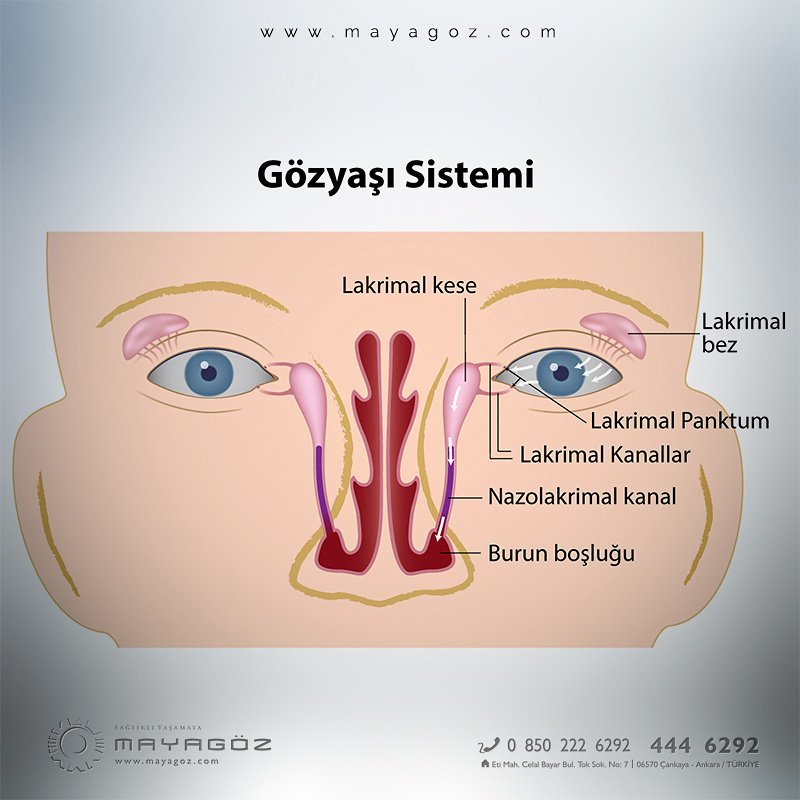 It might feel like you have a grain of sand or dust in your eye. An irritated, inflamed eyelid may be red.
It might feel like you have a grain of sand or dust in your eye. An irritated, inflamed eyelid may be red.
The inner rim of your eyelid looking uneven or rough is a classic sign of MGD, but not everyone has it.
Some people have moments of blurred vision that improves when they blink.
Symptoms can get worse when you’re on the computer for a long time or if the air in your home or office is very dry, either from air conditioning or heating.
MGD is the most common cause of dry eye syndrome (also called dry eye disease). MGD may lead to eyelid inflammation, called blepharitis, especially along the rims.
There’s a lot of overlap among these three conditions, and it’s possible to have them all at once. In fact, experts aren’t entirely sure what comes first, or exactly how they’re connected. It could be that MGD causes inflammation that leads to dry eye, or that inflammation from dry eye could hurt the meibomian glands.
If you’re having eye surgery, untreated MGD raises the chance of getting an infection and inflammation afterward.
In its advanced stage, MGD may lead to cornea disease.
There’s no single thing that can show that you have MGD.
Your eye doctor will look closely at your eyelids to inspect the gland openings. They may press on your eyelids to squeeze oil out.
The Schirmer’s test checks if you make enough tears. Other tests can measure the quality of your meibum and how fast your tears evaporate.
The combination of results can lead to a diagnosis of MGD.
Early on, self-care might be all you need.
Put a warm, wet washcloth or heat pack over your eyelids for 5 minutes, twice a day, to help loosen the oil. Follow this with a light fingertip massage. For the upper lid, look down and very gently roll one side of your index finger from the top of your eyelid down to the lash line. For the lower lid, look up at the ceiling and roll your finger up to the lash line.
To help unblock gland openings, clean with a non-soap cleanser once a day. Dab it on a warm, wet washcloth and gently go along your upper and lower lash lines.
Use a humidifier to counter the drying effects of air conditioning and indoor heating.
If you wear contacts, daily disposable lenses that are the “water gradient” type may be more comfortable.
Avoid your eye area completely when you use beauty products with retinoids.
Check with your doctor about taking omega-3 fatty acid supplements. They have anti-inflammatory properties and may boost the quality of your meibum.
For more advanced MGD and depending on what other health issues you have, your doctor may add medications to your care plan:
- Lubricants
- Antibiotics for infections
- Cyclosporine to suppress your immune system
- Steroids that help ease inflammation
These could be eye drops or spray, creams, or pills.
In the office, your doctor may use devices that send heat or pulsed light to open blocked meibomian glands and improve symptoms.
It’s important to stick with your treatment, especially home care, to reverse MGD or keep it from getting worse.
Top Picks
Meibomian Gland Dysfunction (MGD): Symptoms, Causes, & Treatment
Written by Julie Canter
- What Happens
- Causes
- Symptoms
- Complications
- Diagnosis
- At Home
- Medical Treatment
- More
Meibomian gland dysfunction (MGD) is a common eye condition, yet many people don’t realize they have it. You get it when there’s a problem with a few dozen tiny glands in your eyelids that help make the oil layer of your tears.
These meibomian glands, named after the German doctor who studied them, make an oil called meibum. Meibum, water, and mucus form the three layers of tear film, the fluid that keeps your eyes moist. The oil helps prevent the water layer on the eye surface from evaporating or drying out too quickly.
Changes to the amount or quality of the oil, or to the glands themselves, can lead to MGD. It’s often the result of a combination of things. The most common type, obstructive MGD, happens when the gland openings get clogged, and less and less oil reaches the eye surface.
Your doctor will tailor treatment based on the stage of your MGD as well as any underlying medical condition you have.
Age plays a part; the number of meibomian glands goes down over time. So does your ethnicity; Asian people are about three times more likely to get MGD than people with a European ancestry.
Wearing contact lenses makes you more likely to get it.
Common medical issues linked to MGD are:
- High cholesterol and triglycerides
- Allergic conjunctivitis and other eye diseases
- Inflamed or damaged eyelid or cornea
- Bacterial infection
- Autoimmune diseases like rosacea, lupus, rheumatoid arthritis, and Sjögren’s syndrome
Some medications can cause problems with oil production, including:
- Estrogen replacement therapy
- Drugs that reduce androgen
- Retinoids, from acne medication to anti-aging creams
In its early stage, you might not have any.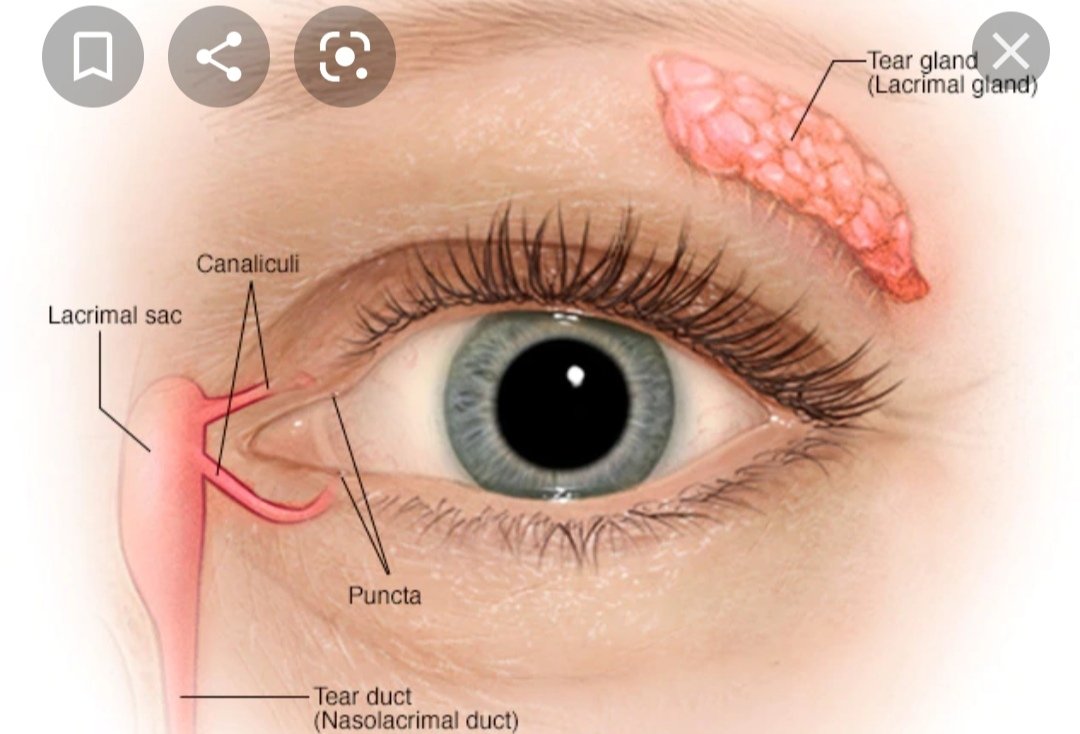
But as MGD progresses and you have less oil or poor-quality oil in your tear film, your eyes may burn, itch, or be irritated or dry. It might feel like you have a grain of sand or dust in your eye. An irritated, inflamed eyelid may be red.
The inner rim of your eyelid looking uneven or rough is a classic sign of MGD, but not everyone has it.
Some people have moments of blurred vision that improves when they blink.
Symptoms can get worse when you’re on the computer for a long time or if the air in your home or office is very dry, either from air conditioning or heating.
MGD is the most common cause of dry eye syndrome (also called dry eye disease). MGD may lead to eyelid inflammation, called blepharitis, especially along the rims.
There’s a lot of overlap among these three conditions, and it’s possible to have them all at once. In fact, experts aren’t entirely sure what comes first, or exactly how they’re connected. It could be that MGD causes inflammation that leads to dry eye, or that inflammation from dry eye could hurt the meibomian glands.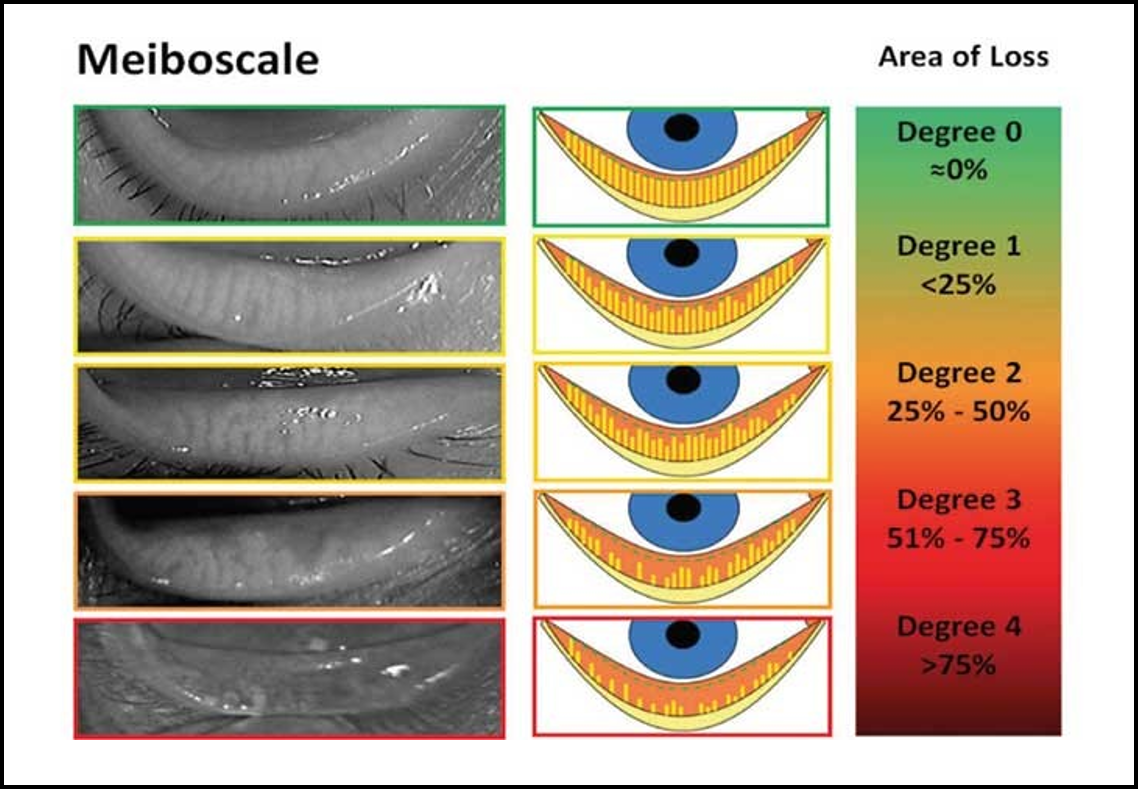
If you’re having eye surgery, untreated MGD raises the chance of getting an infection and inflammation afterward.
In its advanced stage, MGD may lead to cornea disease.
There’s no single thing that can show that you have MGD.
Your eye doctor will look closely at your eyelids to inspect the gland openings. They may press on your eyelids to squeeze oil out.
The Schirmer’s test checks if you make enough tears. Other tests can measure the quality of your meibum and how fast your tears evaporate.
The combination of results can lead to a diagnosis of MGD.
Early on, self-care might be all you need.
Put a warm, wet washcloth or heat pack over your eyelids for 5 minutes, twice a day, to help loosen the oil. Follow this with a light fingertip massage. For the upper lid, look down and very gently roll one side of your index finger from the top of your eyelid down to the lash line. For the lower lid, look up at the ceiling and roll your finger up to the lash line.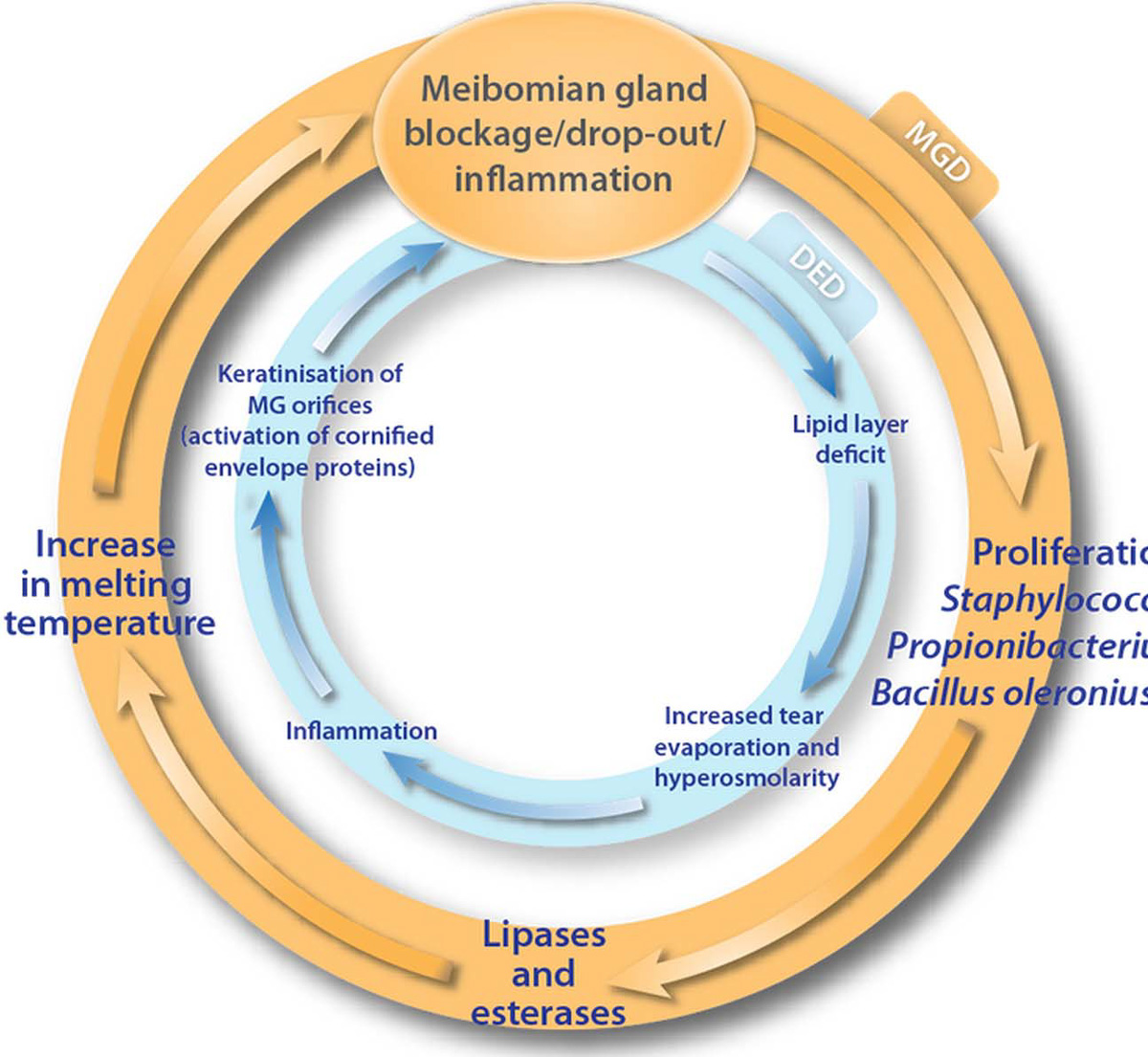
To help unblock gland openings, clean with a non-soap cleanser once a day. Dab it on a warm, wet washcloth and gently go along your upper and lower lash lines.
Use a humidifier to counter the drying effects of air conditioning and indoor heating.
If you wear contacts, daily disposable lenses that are the “water gradient” type may be more comfortable.
Avoid your eye area completely when you use beauty products with retinoids.
Check with your doctor about taking omega-3 fatty acid supplements. They have anti-inflammatory properties and may boost the quality of your meibum.
For more advanced MGD and depending on what other health issues you have, your doctor may add medications to your care plan:
- Lubricants
- Antibiotics for infections
- Cyclosporine to suppress your immune system
- Steroids that help ease inflammation
These could be eye drops or spray, creams, or pills.
In the office, your doctor may use devices that send heat or pulsed light to open blocked meibomian glands and improve symptoms.
It’s important to stick with your treatment, especially home care, to reverse MGD or keep it from getting worse.
Top Picks
Chalazion: Causes, Symptoms, Treatment | doc.ua
Chalazion is a formation of a pea-sized eye in the eyelid, which is caused by the work of the sebaceous glands. This lump may increase in size, turn red and cause pain. When it reaches a large size, the chalazion can cause astigmatic visual impairment.
Attention!
Here you can choose a doctor who treats Chalazion If you are not sure about the diagnosis, make an appointment with a general practitioner or general practitioner to clarify the diagnosis.
The sebaceous glands (meibomian glands) located within the eyelid are involved in the formation of the chalazion. There are 30-40 such glands on each eyelid. They secrete a fluid that, if blocked, forms a lump that causes visible inflammation and enlargement.
Like barley, chalazion is a lump in the eyelid, but does not cause acute infections of the gland. A chalazion of the eyelid is not an infection, but only an inflammation in the eyelid area.
Causes
Chalazion is not a congenital disease, but an acquired one. It can appear due to the fact that a person has too oily skin – blockage of the lacrimal outflow often leads to an increase in gland production. More often the disease occurs in young people, since the glands in older people work less intensively. Causes of chalazion can be:
Causes of chalazion can be:
- weakened state of bodily functions;
- presence of colds;
- failure to maintain personal hygiene;
- use of contact lenses.
There are also certain risk factors that increase the chances of developing a chalazion:
- the presence of chronic blepharitis, inflammation of the eyelids, the presence of which can lead to scarring;
- erythema, seborrheic dermatitis, and various inflammatory skin diseases;
- the state of pregnancy, the presence of diabetes can lead to chalazion in one or two eyes.
Chalazion may appear due to a disease such as internal barley.
Symptoms
Eyelid edema may occur gradually over a week, although there are cases when it occurs suddenly. Chalazion of the upper eyelid is much more common than the lower eyelid. The diameter of the chalazion pea is usually 2-8 mm, while the patient experiences pain and redness. The chalazion of the lower eyelid can be identified on the inner edge of the eyelid using a mirror.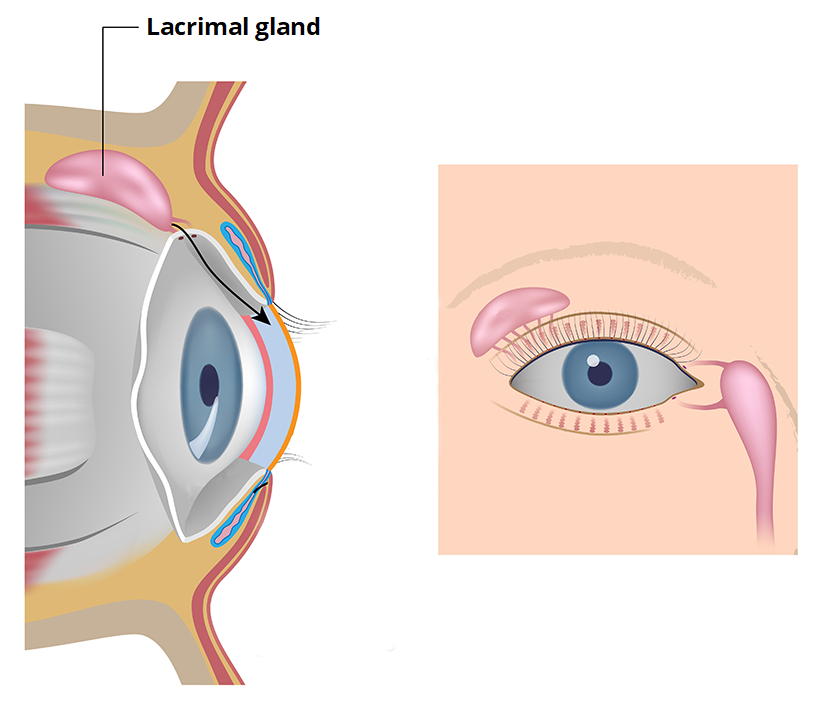 Symptoms of a chalazion include:
Symptoms of a chalazion include:
- puffiness of the eyelids;
- high sensitivity to light;
- eyelid heaviness and tearing;
- pain when squinting;
- blurred vision.
If the illness lasts for a week or more, you should consult an ophthalmologist.
Diagnosis
Diagnosis of the disease includes checking the vision of each eye, examining the face, the eyes themselves and the skin of the eyelids. A sample of chalazion fluid for analysis is taken infrequently.
Treatment
When a chalazion is diagnosed, its treatment, depending on whether the disease is advanced or not, may have several options.
A small, recent chalazion can be treated simply by using special ointments.
Another treatment option is to use corticosteroids. Steroids are injected into the cavity of the chalazion with a thin needle, they contribute to the resorption of the secret that has accumulated in the thickness of the eyelid.
In the event that the pea does not resolve for a long time or its diameter is greater than 5 mm, resort to a surgical method of treatment. The chalazion is removed under local anesthesia. During the procedure, the cyst is excised and all the pathological contents are removed from it, after which an ointment with antibiotics is applied and the eye is sealed with a plaster for a couple of hours. As a rule, the operation to remove the chalazion passes without complications. In people with weakened immune systems, as well as those with diabetes, chalazion can pop up repeatedly. It is more difficult to remove a chalazion in a child and in some cases it is almost impossible to do without surgical intervention. Moreover, even if the baby is helped by therapeutic methods of treatment, parents will have to be patient.
Prices for drugs for chalazion therapy can be viewed on our website in the “Pharmacy” tab, and you can book them online if necessary.
Prevention
Personal hygiene is an elementary means of preventing chalazion.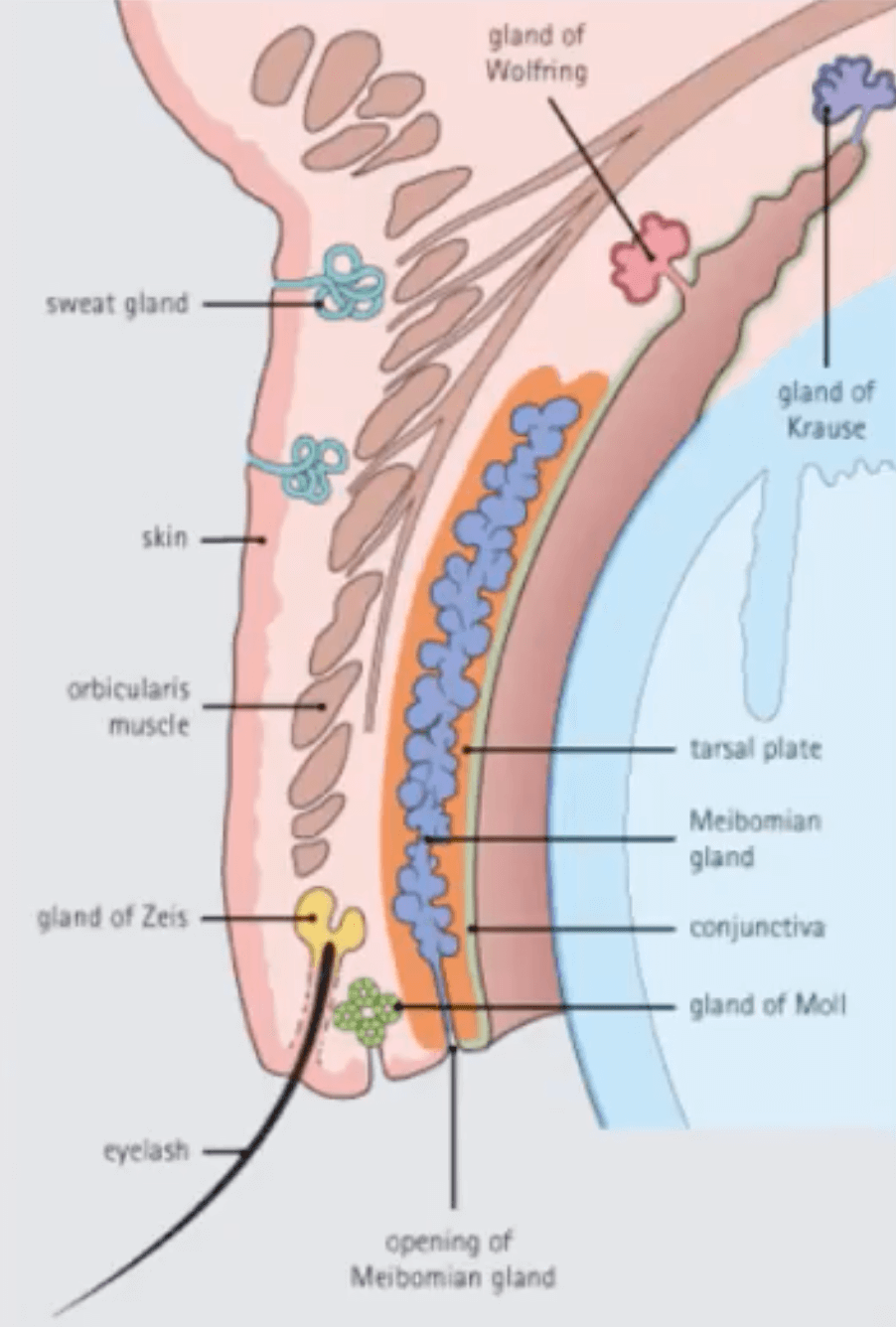 It is necessary to wash hands after the street, visiting the toilet, pets, etc.
It is necessary to wash hands after the street, visiting the toilet, pets, etc.
causes, symptoms, diagnosis, treatment (removal, resorption) in children and adults
Causes
Symptoms
Complications
Diagnosis
Treatment
Prevention
Prognosis
A chalazion looks like a pea-like mass that forms on the upper or lower eyelid. It differs from barley in that it is not located on the very edge of the eyelid, but further. May be painful to touch when large. Sometimes people do not pay attention to a chalazion for years, as it remains small for a long time and does not cause inconvenience, but increases over time, can become inflamed and lead to various complications.
A chalazion on the eye negatively affects the vision and appearance of a person, but with timely access to a doctor, it responds well to treatment.
Reasons
The disease occurs due to blockage of the meibomian gland, which produces a sebaceous secret and secretes it through the duct to the inner surface of the eyelids.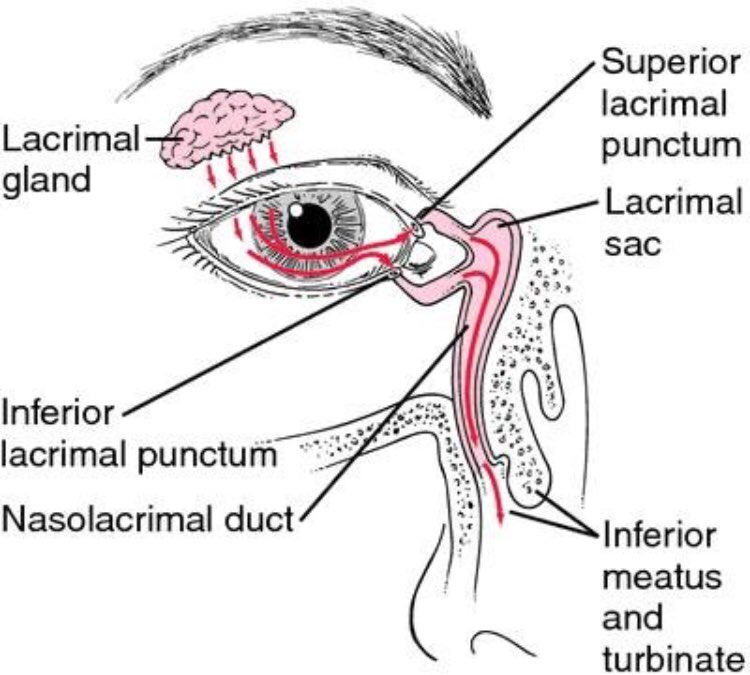 This secret is needed for the formation of lacrimal fluid, at the same time it protects the mucous membranes of the eyelids from irritation by this fluid. This prevents dry eyes. There are about 20-30 such glands on the lower eyelid, and about 30-40 on the upper eyelid. When a person sleeps, the regulation of these glands is reduced, and they secrete an increased amount of secretion that accumulates in the inner corners of the eyes.
This secret is needed for the formation of lacrimal fluid, at the same time it protects the mucous membranes of the eyelids from irritation by this fluid. This prevents dry eyes. There are about 20-30 such glands on the lower eyelid, and about 30-40 on the upper eyelid. When a person sleeps, the regulation of these glands is reduced, and they secrete an increased amount of secretion that accumulates in the inner corners of the eyes.
Under certain conditions, blockage of the duct of the meibomian gland can occur, and then the entire secret begins to accumulate in it, which causes its increase, and this becomes the cause of the chalazion. The seal is painless, has a flesh color on the outside, and is grayish on the inside. It may contain not only a sebaceous secret, but also a purulent one, although there may not be an inflammatory process as such.
Meibomian gland blockages are believed to be due to:
- lipid metabolism disorders in the body due to diseases of the digestive system, as a result, the excreted secret is too thick and viscous;
- infectious skin diseases, such as seborrhea or demodicosis, can lead to the formation of small scars and inflammatory foci in and around the ducts, causing their narrowing and impaired secretion outflow;
- endocrine diseases, especially diabetes mellitus, lowering immunity, which favors the development of microorganisms and inflammatory eye diseases;
- individual characteristics of the skin – in particular, increased production of the sebaceous glands, which happens in people with excessively oily skin;
- avitaminosis.

In addition, chalazion of the upper or lower eyelid often develops simply due to poor hygiene: dirt in the eyes, improper use of contact lenses, even the use of expired eye drops. The reason may be a decrease in immunity due to chronic or acute diseases, oncology.
Chalazion occurs much less frequently in children than in adults. In childhood, this happens mainly in the summer, when children actively relax on the street and near water bodies, not really caring about hygiene.
Symptoms
Manifestations of chalazion increase as it develops. And although this formation looks similar to some inflammatory ones, such as blepharitis or barley, the symptoms of chalazion are different:
- there is no focus of inflammation in the affected gland, therefore there is no redness;
- education increases slowly;
- no pain when blinking;
- no purulent discharge from the gland;
- the chalazion capsule is mobile on palpation, since there is no edema around it.

At first, the disease does not cause any inconvenience, except for some violation of the aesthetic appearance. However, as the capsule enlarges, symptoms appear and they gradually increase.
When the capsule becomes more than 3 mm in diameter, there is a sensation of a foreign body in the eye, as it begins to irritate the cornea when blinking. Lachrymation appears, the skin over the formation begins to peel off and itch. Periodically, the gland becomes inflamed and a characteristic redness appears.
With further growth and exacerbation of the chalazion, the eyelid turns out to be raised above the eyeball, and the symptoms become more pronounced:

These symptoms of chalazion are especially pronounced if the upper eyelid is affected. When blinking, it makes movements with a larger amplitude, so the pressure on the eyeball is in a larger arc. As a result, soreness and visual disturbances appear faster and stronger than with the defeat of the lower eyelid. In addition, the chalazion is much more noticeable on the upper eyelid, as it causes a greater asymmetry of the eyes.
Complications
If the chalazion is left untreated, its capsule can reach a large size and exert strong pressure on the eyeball. This will inevitably cause the development of various inflammatory ophthalmic diseases: conjunctivitis, keratitis, and vision will deteriorate irreversibly, severe astigmatism will develop.
Possible formation of ulcers on the cornea, the development of phlegmon of the eyelid and the formation of a fistula from the affected gland.
In addition, the gland can become infected, causing severe pain, tearing, and inflammation of the subcutaneous fat of the orbit. This will not only negatively affect vision, the swelling can be so great that the eye stops opening. Such cases are treated in a hospital.
This will not only negatively affect vision, the swelling can be so great that the eye stops opening. Such cases are treated in a hospital.
And, of course, infection always carries the risk of developing sepsis, which can even lead to death.
Diagnosis
There are no special problems with the diagnosis of this disease. An ophthalmologist can make a diagnosis based on examination and questioning of the patient. The absence of pain when blinking, purulent discharge, the appearance of more than 2 weeks ago – these signs indicate the development of a chalazion, and not an acute inflammatory disease.
The doctor may order some examinations for the patient:
- general and biochemical blood tests;
- blood cultures to detect chronic infections in the body;
- sowing a smear from the inside of the eyelid to identify bacteria that cause eye infections;
- analysis of scrapings from the eyelids to detect microscopic skin parasites.

Sometimes an ophthalmologist can refer a patient to a consultation with a dermatologist and a general practitioner. But all these studies are rarely used. Usually, a survey and blood tests are enough for a doctor, since the symptoms of the disease are quite specific, and there are no particular difficulties in diagnosing.
Treatment
If the patient goes to the doctor at a very early stage, even before the encapsulation of the affected gland, the treatment takes only a few days, and no consequences occur. However, this happens very rarely, since the early symptoms of a chalazion are too mild and do not cause any inconvenience, so they are rarely treated.
For the treatment of chalazion, eye drops and ointments are usually prescribed, containing antibiotics, antiseptics, hormones:
- antibiotics Vigamox, Ciprolet and some others – in the form of ointments and eye drops;
- antibiotics in combination with hormonal anti-inflammatory drugs are usually used for chronic course – Tobradex, Garazon and the like.

If the neoplasm is not infected and not inflamed, physiotherapy is prescribed – dry heat and eyelid massage. This allows you to make the viscous secret in the affected gland softer and cause its outflow. Dry heat can also be used at home – apply a heated bag of sand, salt, or simply a cloth folded in several layers.
The capsule can open on its own, and then a wound forms in its place, which must be treated with ointments with antibiotics – erythromycin, tetracycline, with corticosteroids – Hydrocortisone, Floxadex. Homeopathic ointment for resorption of chalazion Traumeel is also often used. Antibiotic drops are also used. This helps the wound heal quickly and prevents infection.
If drug treatment fails and the mass continues to grow, the chalazion can be removed surgically. In adults, the operation is performed under anesthesia, and in children, anesthesia is used. Various surgical methods are possible – shelling the capsule through an incision or laser removal.
Prevention
For prevention, it is enough to follow the basic hygiene requirements that will help prevent dirt and bacteria from getting into the eyes:
- wash your face after sleep to remove the accumulation of secretions under the eyelids;
- wash off makeup in the evening;
- observe the rules for storage and handling of contact lenses;
- use a clean cosmetic tool;
- do not rub your eyes with dirty hands;
- do not overcool;
- monitor health, treat diseases of the digestive system and increase immunity.
The rules are simple, but following them will help prevent the appearance of chalazion and other eye diseases.
Forecast
With timely treatment in the early stages, no consequences of the chalazion occur, and the prognosis is favorable. If the capsule has reached a large size, and complications have developed in the form of visual impairment and astigmatism, then they are likely to remain forever.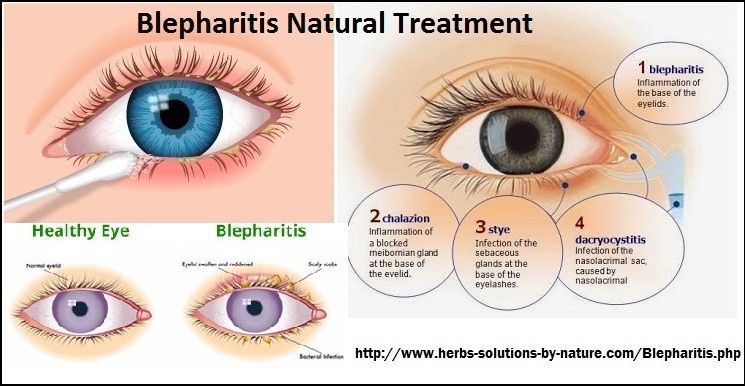 Therefore, you should avoid severe visual impairment and consult a doctor as soon as possible.
Therefore, you should avoid severe visual impairment and consult a doctor as soon as possible.
The author of the article:
Yury Alexandrovich Gusev
ophthalmic surgeon, head of the department “Ophthalmology”, DMN
work experience 28 years
reviews leave feedback
Clinic
reviews0005 Yury Alexandrovich Gusev
It was very pleasant to be in the clinic at B/Sukharevsky lane 19/2. The ophthalmology department is beyond praise. All the staff, from the front desk, are caring and very attentive. In the operating room, Svetlana took care of me like a small child, helped me get dressed, fed and watered me from a spoon. The registrar Daria was very helpful, called back and found a window for the next appointment. Manager Irina accompanied me to each office during the preoperative examination and waited patiently. And everyone tried to help! As for my dear doctor Yury Alexandrovich Gusev, who saved my, as I thought, hopeless eye, his assistants, doctors Ksenia Olegovna and Tatyana, these wonderful professionals calmed me down, inspired confidence and accompanied me before and after the operation. Yuri Alexandrovich performed the operation in a filigree manner, the world sparkled with colors again, I see again! Doctor, thank you very much, low bow!
Yuri Alexandrovich performed the operation in a filigree manner, the world sparkled with colors again, I see again! Doctor, thank you very much, low bow!
Services
- Title
- Primary appointment (examination, consultation) with an ophthalmologist2850
- Repeated appointment (examination, consultation) with an ophthalmologist1900
- Appointment of an ophthalmologist doctor of medical sciences, professor, expert5000
Health articles
All articlesAllergistGastroenterologistHematologistGynecologistDermatologistImmunologistInfectionistCardiologistCosmetologistENT doctor (otolaryngologist)MammologistNeurologistNephrologistOncologistOphthalmologistProctologistPsychotherapistPulmonologistRheumatologistTraumatologist-orthopedistTrichologistUrologistPhlebologistSurgeonEndocrinologist
Our doctors
Specialization of the doctorAllergistAndrologistAnesthetistPediatrician house callPaediatrician house callGastroenterologistHematologistGynecologistBreastfeedingDermatologistPediatric allergologistPediatric gastroenterologistPediatric gynecologistPediatric dermatologistPediatric infectious disease specialistPediatric cardiologistPediatric ENT specialistPediatric chiropractorPediatric massagePediatric neurologistPediatric neurologist phrologistPediatric oncologistPediatric osteopathPediatric ophthalmologistPediatric psychiatristPediatric traumatologistPediatric urologistPediatric surgeonPediatric endocrinologistPediatric departmentDietologistImmunologistInfectionistHeadache roomCardiologistCosmetologistENT doctor (otolaryngologist)MammologistManual therapistMassageNarcologistNeurologistNeurologistNephrologistOncologistOperational unitOsteopathOt department of pediatrics m. TherapistTraumatologist-orthopedistTrichologistUltrasound (ultrasound examination)UrologistPhysiotherapistPhlebologistSurgeonSurgical operations under the compulsory medical insurance policy of the Moscow RegionEndocrinologistAesthetic gynecologyClinics. Smolensk. Taganskaya. Street 1905 years. Red Gates. AvtozavodskayaPharmacy. Glades. Sukharevskaya. st. Academician Yangelam. Frunzenskaya Zelenograd
TherapistTraumatologist-orthopedistTrichologistUltrasound (ultrasound examination)UrologistPhysiotherapistPhlebologistSurgeonSurgical operations under the compulsory medical insurance policy of the Moscow RegionEndocrinologistAesthetic gynecologyClinics. Smolensk. Taganskaya. Street 1905 years. Red Gates. AvtozavodskayaPharmacy. Glades. Sukharevskaya. st. Academician Yangelam. Frunzenskaya Zelenograd
Antonova Irina Igorevna
Deputy chief physician for clinical and expert work
reviews
Clinic
m. Frunzenskaya
Kim Andrey Eduardovich
ophthalmic surgeon, oculoplasty
reviews
Make an appointment
Clinic
m. Sukharevskaya
Grechanichenko Natalya Alexandrovna
ophthalmologist, doctor of the highest category
reviews
Make an appointment
Clinic
m. Sukharevskaya
Sukharevskaya
Kubanova Marina Vladimirovna
ophthalmologist
reviews
Make an appointment
Clinic
m. Frunzenskaya
Soldatkin Artem Petrovich
ophthalmologist, ophthalmic surgeon
reviews
Make an appointment
Clinic
m. Sukharevskaya
Simakova Olga Dmitrievna
ophthalmologist
reviews
Make an appointment
Clinic
m. Polyanka
Balykina Irina Egorovna
ophthalmologist
reviews
Make an appointment
Clinic
m. Street 1905 year
Khudzieva (Tigieva) Alana Borisovna
ophthalmologist
reviews
Make an appointment
Clinic
m.

